Explore top questions within Restoration & Enhancement

- What are my options for marine enhancement?
- How should I assess the baseline?
- What guidance is available for saltmarsh restoration?
- What guidance is available for sand dune restoration?
- What guidance is available for seagrass restoration?
- What guidance is available for native oyster restoration?
- What guidance is there for the enhancement of other species and habitats?
How should I assess the baseline?
As part of your work on baseline please do consider crucial elements such as permissions and biosecurity. You can find more information on both in the ‘Permissions’ section.
The first step in deciding what is best in your chosen location is to undertake a baseline survey – to begin with this shouldn’t be overly complex or expensive. Simply, taking all sensible safety precautions, walk the area around low tide and look for what is already there, look out for healthy sites of key species such as seagrass or native oysters, look for signs of previous populations such as old native oyster shell, take photos and use resources such as i-spot and i-naturalist to identify as much as you can.
Once you have an idea of what is there you can start to compare to historic records and other survey data (see separate sections relating to key species). Make sure you make good use of the Scottish Government’s own data set at National Marine Plan Interactive (NMPi).
If you do find that you are looking at an area which is protected in some way seek advice from NatureScot so they can advise you about the site and what the protections mean for your project.
More information about survey can be found in our monitoring section.
Create a bespoke check list for your project:
No items added to your checklist yet.
Glossary
It can feel overwhelming with the amount of terminology surrounding restoration. Search for specific words or explore our glossary through the below themes:
- Algae = A photosynthetic, plant-like single- or multi-cellular organism.
- Bathyscope = Underwater viewer that can be used from a boat or dry land, generally as a clear bottom viewing cone. It works by eliminating both water surface glare and internal reflection, thereby allowing underwater viewing as far as water clarity and light will permit.
- Bed = Used to describe when a marine animal forms a bed like structure that is greater than 5mx5m.
- Boat draught = The vertical distance between the waterline and the bottom of the hull (keel).
- BSL = Below sea level (water depth).
- Colonial = Several individual organisms (of the same species) living together in close association.
- Datum = A known, fixed point.
- DDV = A drop down video system (DDV) is a marine survey equipment setup that is typically an underwater camera and lights on a robust sled/frame. DDV systems generally have a live stream of footage to the surface, built in depth sensors and lasers to provide a scale to estimate the field of view.
- Ebb and flood tide = Ebb is the tidal phase during which the water level is falling and flood the tidal phase during which the water level is rising.
- Eddies = An eddy is a circular current of water.
- Epiphyte = A small plant that grows attached to another plant.
- GIS = Geographic Information System (GIS) is a system designed to capture, store, manipulate, analyse, manage, and present all types of geographical data.
- GPS = Global Positioning System used to navigate and mark locations.
- Inshore water = Scotland’s inshore waters are the marine region within 12 nautical miles of the coast.
- Intertidal = The intertidal zone or “littoral zone” is the term used to describe the seashore which is covered during high tide and exposed during low tide.
- Marine life cover = The dominating marine community on the seabed or shoreline.
- MPA = Marine Protected Area
- Native Range = Native range refers to the part of the natural range where a species or other taxonomic entity currently naturally occurs (e.g. the places it has reached without movement by humans and still occurs at)
- Native range = A species range is the area where a particular species can normally be found during its lifetime.
- Non-native species = Species introduced or spread from one region to another outside their normal range.
- PMF = Priority Marine Feature. This is used in Scotland to describe features characteristic of the Scottish marine environment. The list of PMFs is used to focus conservation and they are given policy protection in the National Marine Plan.
- Polecam = A polecam is a video camera attached to a pole that can be deployed to record underwater.
- Quadrat = A defined area for scientific sampling, and the frame that is used to define this area.
- Random = Lack of pattern or predictability.
- ROV = Remotely Operated Vehicle is an unoccupied underwater robot that is connected to the surface by a cable.
- SCUBA = Self-Contained Underwater Breathing Apparatus.
- Sessile = Permanently attached to the substrate. Can only move by external forces (such as water currents).
- Slack water = A short period in a body of tidal water when the water is completely unstressed, and there is no movement either way in the tidal stream, which occurs before the direction of the tidal stream reverses.
- Species = A name of a living organism.
- Spring tide = A tide in which the difference between high and low tide is the greatest. This results in very low, low tides and very high, high tides.
- Substrate = The surface or material on or from which an organism lives (e.g. rock, cobbles or mud).
- Subtidal = The area of coast which is covered by water at low tide.
- Taxonomic hierarchy = Taxonomic hierarchy is the process of arranging various organisms into successive levels of the biological classification.
- Tether = The cable that connected an underwater camera to the surface, which transfers information or power.



